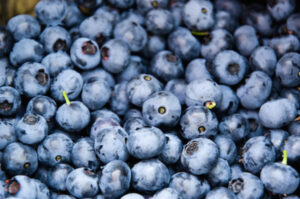5 Vegan Sources of Omega-3 Fatty Acids

Omega-3 fatty acids are crucial in maintaining overall health – they are found in every single cell of the body. But it isn’t as simple as increasing consumption of foods with an omega-3 content, as the ratio of omega-3 to omega-6 fatty acids is just as important. Too much omega-6 can overshadow the benefits of omega-3 and deem any food, otherwise rich in omega-3s, a bad source for the fatty acid. There is a list of foods, most notably cold-water fish, that provide omega-3s whilst keeping the ratio with omega-6s low, but we’ve sorted out the vegan options so you can keep your diet healthy and animal friendly.
The reason omega-3 fatty acids garner so much attention is that they are often lacking in the modern human diet, especially among vegetarians. To fix this, it’s not just a matter of eating foods high in omega-3s, because often these foods are also high in omega-6 fatty acids. It is important to strike a proper balance between these two fatty acids in order for the body to function optimally.
Experts estimate that man evolved with a ratio of omega-6 to omega-3 fatty acids that was 1:1. Today, this ratio has reached between 10:1 and 20-25:1 – clearly above and beyond what it should be. An excess of omega-6 in relation to omega-3 fatty acids inhibits omega 3 from converting into DHA and EPA, both essential to heart health as well as the proper functioning of the human brain. Omega-6 is far more present in foods than omega-3. So even while omega-6 itself is necessary, it’s simply over-represented in both the standard American diet and vegetarian diet.
A report discovered that the average American consumes 10 to 20-times more omega-6 than omega-3 fatty acids. Most experts will recommend a balance of 4:1, omega-6 to omega-3, but 1:1 is the ideal scenario.
A diet with sufficient omega-3 fatty acids fights inflammation and autoimmune diseases. In various studies, omega-3 fatty acids showed the ability to improve joint pain, ease ulcerative colitis, improve skin lesions, treat psoriasis, decrease the number and size of tumors, encourage healthy brain development in infants and lower LDL (bad) cholesterol. You do not want to skimp on these fatty acids!
Omega-6 fatty acids at their highest in vegetable oils and are thus more readily available in the foods we eat, and in much higher quantities than omega-3 fatty acids.
Here are 5 vegan sources of omega-3 fatty acids offering a healthy ratio in relation to omega-6 fatty acids.
1. Flax Seeds
One ounce of flax seeds contains 6,388 milligrams of omega 3, which is six times the RDA and blowing the 1,655 milligrams of omega 6 out of the water. Flax oil offers even more omega 3 – 7,196 milligrams per tablespoon!
2. Mustard Oil
Oils are generally rich in omega 6, so why not switch it up with an oil that offers more milligrams of omega 3 per omega 6? Mustard oil has 826 milligrams of omega 3 and 2,146 milligrams of omega 6 per tablespoon. Generally, this ratio is far higher. In olive oil, there are 103 milligrams of omega 3 and 1,218 milligrams of omega 6.
3. Seaweed or Algae
Seaweed is packed with omega-6 fatty acids. Spirulina, an algae, offers a healthy balance, with 58 milligrams of omega 3 and 88 milligrams of omega 6 per tablespoon.
4. Berries
Blueberries are the star among berries, providing 174 milligrams of omega 3 and 258 milligrams of omega 6 per cup.
5. Cabbage Family
The cabbage family is a surprising source of omega-3 fatty acids. Cauliflower packs in 208 milligrams of omega 3 and 62 grams of omega 6 per cup, cooked.
Related on Organic Authority
8 Fish-Free Omega Fatty Acid Rich Food
Need Omega-3 Fatty Acids? Monsanto’s Got ‘Em!
Photo Credit: @rsseattle

